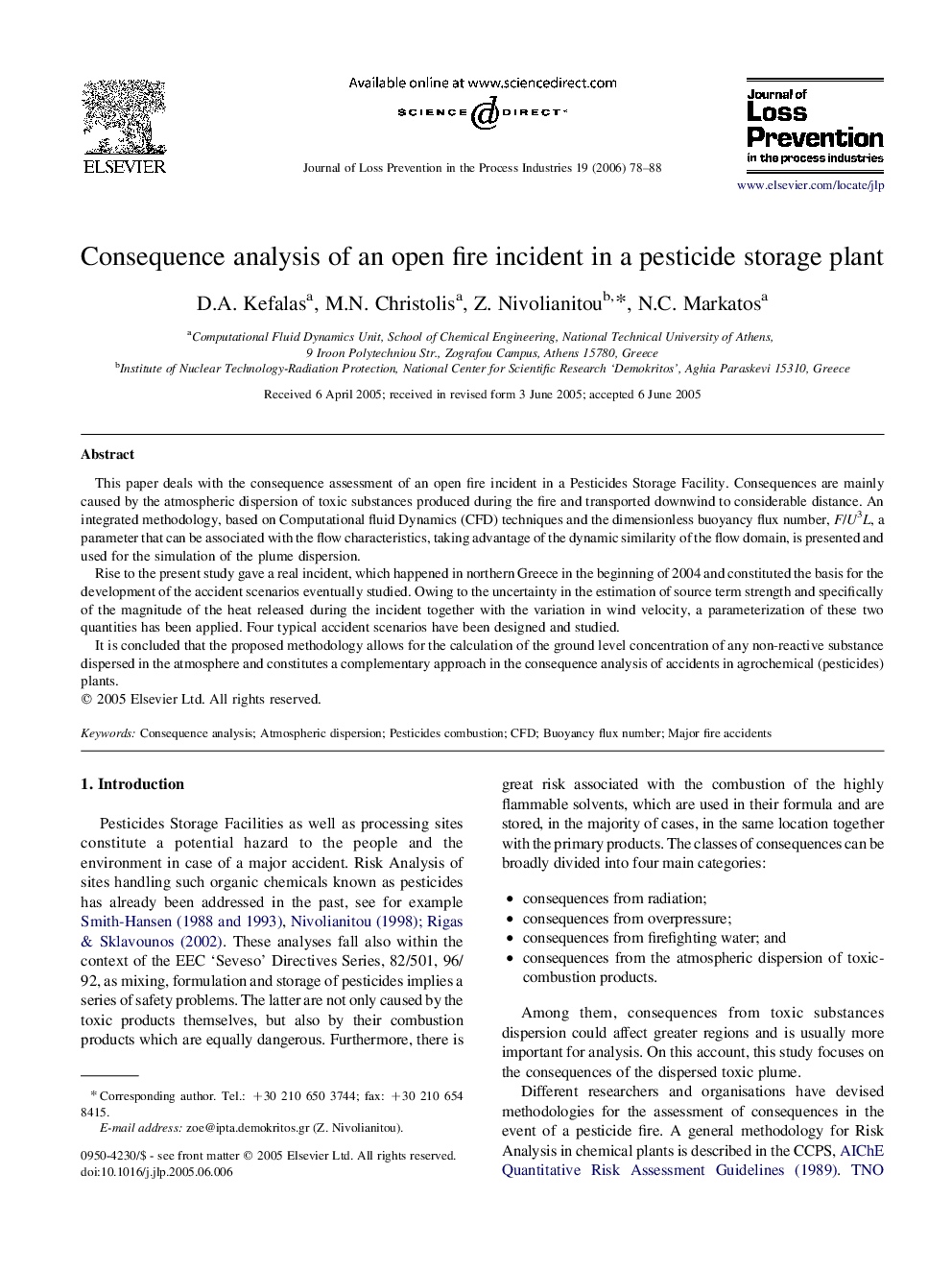| Article ID | Journal | Published Year | Pages | File Type |
|---|---|---|---|---|
| 586830 | Journal of Loss Prevention in the Process Industries | 2006 | 11 Pages |
This paper deals with the consequence assessment of an open fire incident in a Pesticides Storage Facility. Consequences are mainly caused by the atmospheric dispersion of toxic substances produced during the fire and transported downwind to considerable distance. An integrated methodology, based on Computational fluid Dynamics (CFD) techniques and the dimensionless buoyancy flux number, F/U3L, a parameter that can be associated with the flow characteristics, taking advantage of the dynamic similarity of the flow domain, is presented and used for the simulation of the plume dispersion.Rise to the present study gave a real incident, which happened in northern Greece in the beginning of 2004 and constituted the basis for the development of the accident scenarios eventually studied. Owing to the uncertainty in the estimation of source term strength and specifically of the magnitude of the heat released during the incident together with the variation in wind velocity, a parameterization of these two quantities has been applied. Four typical accident scenarios have been designed and studied.It is concluded that the proposed methodology allows for the calculation of the ground level concentration of any non-reactive substance dispersed in the atmosphere and constitutes a complementary approach in the consequence analysis of accidents in agrochemical (pesticides) plants.
